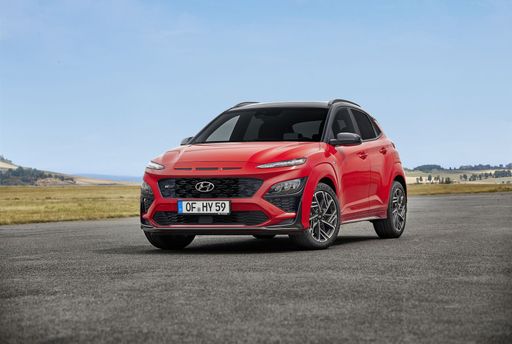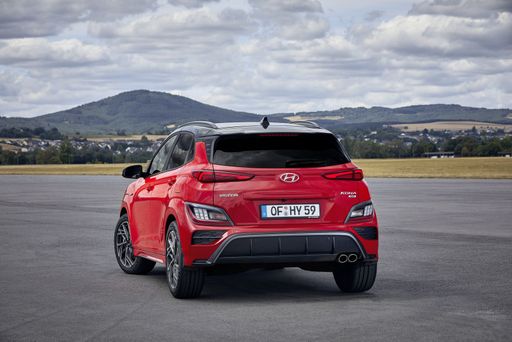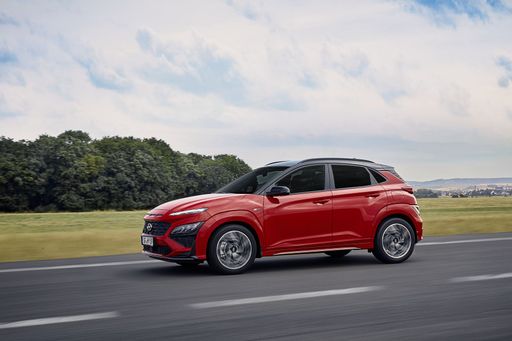Hyundai Kona vs Kia EV5 – Differences & prices compared
Two cars, one duel: Hyundai Kona meets Kia EV5.
Which one wins in performance, efficiency and value for money? Find out now!
Costs and Efficiency:
Price and efficiency are key factors when choosing a car – and this is often where the real differences emerge.
Hyundai Kona has a decisively advantage in terms of price – it starts at 23100 £, while the Kia EV5 costs 39400 £. That’s a price difference of around 16363 £.
In terms of energy consumption, the advantage goes to the Hyundai Kona: with 14.60 kWh per 100 km, it’s a bit more efficient than the Kia EV5 with 16.90 kWh. That’s a difference of about 2.30 kWh.
As for range, the Kia EV5 performs minimal better – achieving up to 530 km, about 16 km more than the Hyundai Kona.
Engine and Performance:
Power, torque and acceleration say a lot about how a car feels on the road. This is where you see which model delivers more driving dynamics.
Both models deliver identical power – 218 HP each.
In acceleration from 0 to 100 km/h, the Hyundai Kona is slight quicker – completing the sprint in 7.80 s, while the Kia EV5 takes 8.40 s. That’s about 0.60 s faster.
In terms of top speed, the Hyundai Kona performs clearly perceptible better – reaching 210 km/h, while the Kia EV5 tops out at 165 km/h. The difference is around 45 km/h.
There’s also a difference in torque: Kia EV5 pulls slightly stronger with 295 Nm compared to 265 Nm. That’s about 30 Nm difference.
Space and Everyday Use:
Beyond pure performance, interior space and usability matter most in daily life. This is where you see which car is more practical and versatile.
Both vehicles offer seating for 5 people.
In curb weight, Hyundai Kona is clearly lighter – 1370 kg compared to 2069 kg. The difference is around 699 kg.
In terms of boot space, the Kia EV5 offers slightly more room – 566 L compared to 466 L. That’s a difference of about 100 L.
In maximum load capacity, the Kia EV5 performs noticeable better – up to 1650 L, which is about 350 L more than the Hyundai Kona.
When it comes to payload, Kia EV5 barely noticeable takes the win – 511 kg compared to 490 kg. That’s a difference of about 21 kg.
Who comes out on top?
Overall, the Hyundai Kona shows itself to be outperforms in nearly all aspects and secures the title of DriveDuel Champion.
It convinces with the more balanced overall package and proves to be the more versatile choice for everyday use.

Hyundai Kona
Hyundai Kona
The Hyundai Kona blends a bold design with a versatile interior, making it a standout choice in the compact SUV market. Its crisp handling and responsive steering provide an engaging driving experience, whether in the city or on the open road. The vehicle also offers a range of features designed to enhance comfort and connectivity, ensuring a pleasurable journey for both driver and passengers.
details @ hyundai.news
@ hyundai.news
 @ hyundai.news
@ hyundai.news
 @ hyundai.news
@ hyundai.news
 @ hyundai.news
@ hyundai.news
Kia EV5
Kia's EV5 is an exciting entry into the electric SUV market, showcasing the brand's commitment to sustainable mobility. With its modern design and advanced technology features, the EV5 promises to deliver a smooth and environmentally friendly driving experience. The interior offers a spacious and comfortable ride, making it an appealing choice for families and eco-conscious drivers alike.
details

|
|
|
|
|
Costs and Consumption |
|
|---|---|
|
Price
23100 - 41600 £
|
Price
39400 - 45400 £
|
|
Consumption L/100km
4.6 - 7 L
|
Consumption L/100km
-
|
|
Consumption kWh/100km
14.6 - 16.8 kWh
|
Consumption kWh/100km
16.9 - 17.8 kWh
|
|
Electric Range
377 - 514 km
|
Electric Range
505 - 530 km
|
|
Battery Capacity
1.3 - 65.4 kWh
|
Battery Capacity
81.40 kWh
|
|
co2
0 - 163 g/km
|
co2
0 g/km
|
|
Fuel tank capacity
38 - 47 L
|
Fuel tank capacity
-
|
Dimensions and Body |
|
|---|---|
|
Body Type
SUV
|
Body Type
SUV
|
|
Seats
5
|
Seats
5
|
|
Doors
5
|
Doors
5
|
|
Curb weight
1370 - 1773 kg
|
Curb weight
2069 kg
|
|
Trunk capacity
466 L
|
Trunk capacity
566 L
|
|
Length
4350 - 4385 mm
|
Length
4610 mm
|
|
Width
1825 mm
|
Width
1875 mm
|
|
Height
1580 - 1585 mm
|
Height
1675 mm
|
|
Max trunk capacity
1300 L
|
Max trunk capacity
1650 L
|
|
Payload
420 - 490 kg
|
Payload
511 kg
|
Engine and Performance |
|
|---|---|
|
Engine Type
Electric, Petrol, Full Hybrid
|
Engine Type
Electric
|
|
Transmission
Automatic, Manuel
|
Transmission
Automatic
|
|
Transmission Detail
Manual Gearbox, Dual-Clutch Automatic
|
Transmission Detail
Reduction Gearbox
|
|
Drive Type
Front-Wheel Drive, All-Wheel Drive
|
Drive Type
Front-Wheel Drive
|
|
Power HP
115 - 218 HP
|
Power HP
218 HP
|
|
Acceleration 0-100km/h
7.8 - 11.9 s
|
Acceleration 0-100km/h
8.40 s
|
|
Max Speed
162 - 210 km/h
|
Max Speed
165 km/h
|
|
Torque
200 - 265 Nm
|
Torque
295 Nm
|
|
Number of Cylinders
3 - 4
|
Number of Cylinders
-
|
|
Power kW
85 - 160 kW
|
Power kW
160 kW
|
|
Engine capacity
998 - 1598 cm3
|
Engine capacity
-
|
General |
|
|---|---|
|
Model Year
2024 - 2025
|
Model Year
2025
|
|
CO2 Efficiency Class
A, D, C, E, F
|
CO2 Efficiency Class
A
|
|
Brand
Hyundai
|
Brand
Kia
|
Is the Hyundai Kona offered with different drivetrains?
Available configurations include Front-Wheel Drive or All-Wheel Drive.
The prices and data displayed are estimates based on German list prices and may vary by country. This information is not legally binding.
